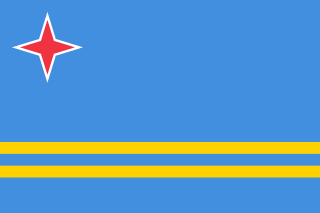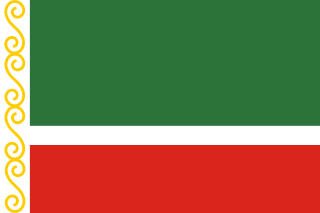
A national flag is a flag that represents and symbolizes a given nation. It is flown by the government of that nation, but can also be flown by its citizens. A national flag is typically designed with specific meanings for its colours and symbols, which may also be used separately from the flag as a symbol of the nation. The design of a national flag is sometimes altered after the occurrence of important historical events. The burning or destruction of a national flag is a greatly symbolic act.

The national flag of the Netherlands is a horizontal tricolour of red, white, and blue. The current design originates as a variant of the late 16th century orange-white-blue Prinsenvlag, evolving in the early 17th century as the red-white-blue Statenvlag, the naval flag of the States-General of the Dutch Republic, making the Dutch flag the oldest tricolour flag in continuous use. As a flag that symbolises the transformation from monarchy to republic, it has inspired both the derivative Russian flag, and after the French Revolution in 1789, the vertically striped French tricolour; both flags in turn influenced many other tricolours. During the economic crisis of the 1930s, the old Prince's Flag with the colour orange gained some popularity among some people. To end the confusion, the colours red, white and blue and its official status as the national flag of the Kingdom of the Netherlands were reaffirmed by royal decree on 19 February 1937.

The national flag of Aruba was adopted on 18 March 1976, along with the official anthem "Aruba Dushi Tera". The flag was partially designed by vexillologist Whitney Smith. On 18 March Aruba celebrates National Anthem and Flag Day, marked by local events across the island. It is also a significant day as it represents the Kingdom of the Netherlands giving Aruba an autonomous status.

The flag of Chechnya is a rectangle with sides in the ratio 2:3 representing the Chechen Republic, a republic of Russia. The flag is composed of three horizontal bars of, from top to bottom: green, representing Islam; white; and red; superimposed on them is a narrow vertical white band at the hoist, containing the national ornament, a design of four golden scroll shapes.

The national flag of Angola came into use when Angola gained independence on November 11, 1975. It is split horizontally into an upper red half and a lower black half with an emblem resting at the center. It features a yellow half gear wheel crossed by a machete and crowned with a star.

The national emblem of Cape Verde contains a circle within which is written the name of the nation in Portuguese. Within the circle are a torch and triangle, symbols of freedom and national unity. At the top of the shield is a plumbob, a symbol of righteousness; three chain links are at the bottom. This emblem replaces the earlier variant with the seashell that had been in use since independence. The current emblem was adopted in 1999.

The national flag of Ecuador, which consists of horizontal bands of yellow, blue and red, was first adopted by law in 1835 and later on 26 September 1860. The design of the current flag was finalized in 1900 with the addition of the coat of arms in the center of the flag. Before using the yellow, blue and red tricolor, Ecuador's former flag had three light blue stripes and two white stripes with three white stars for each province of the country.The design of the flag is very similar to those of Colombia and Venezuela, which are also former constituent territories of Gran Colombia. All three are based on a proposal by Venezuelan General Francisco de Miranda, which was adopted by Venezuela in 1811 and later Gran Colombia with some modifications. There is a variant of the flag that does not contain the coat of arms that is used by the merchant marine. This flag matches Colombia's in every aspect, but Colombia uses a different design when her merchant marine ships are at sail.

The national flag of Egypt is a tricolour consisting of the three equal horizontal red, white, and black bands of the Egyptian revolutionary flag that dates back to the 1952 Egyptian Revolution. The flag bears Egypt's national emblem, the Egyptian eagle of Saladin, centred in the white band.

The flag of Equatorial Guinea was adopted on August 21, 1979. The six stars on the flag represent Equatorial Guinea's mainland and five islands. Under the rule of dictator Francisco Nguema the flag was modified and a different national emblem was used in it. After he was deposed the original flag was restored.

The current flag of Sudan was adopted on 20 May 1970 and consists of a horizontal red-white-black tricolour with a green triangle at the hoist. The flag is based on the Arab Liberation Flag of the Egyptian Revolution of 1952, as are the flags of Egypt, Iraq, Syria, Yemen, and Palestine and formerly of the United Arab Republic, North Yemen, South Yemen, and the Libyan Arab Republic.

The national emblem of Indonesia is called Garuda Pancasila. The main part is the Garuda with a heraldic shield on its chest and a scroll gripped by its legs. The shield's five emblems represent Pancasila, the five principles of Indonesia's national ideology. The Garuda claws gripping a white ribbon scroll inscribed with the national motto Bhinneka Tunggal Ika written in black text, which can be loosely translated as "Unity in Diversity". Garuda Pancasila was designed by Sultan Hamid II from Pontianak, supervised by Sukarno, and was adopted as the national emblem on 11 February 1950.

The national emblem of East Timor is one of the national symbols of East Timor.

The coat of arms of Suriname was adopted on November 25, 1975. The motto reads Justitia – Pietas – Fides. It consists of two indigenous men carrying a shield; a trade ship on the water representing Suriname's colonial past as a source of cash crops and its present day involvement in international commerce; the royal palm represents both the rainforest that covers two-thirds of the country and the country's involvement in agribusiness; the diamond represents the mining industry; the star symbolizes the five continents from which the inhabitants of Suriname immigrated.

The flag of Amsterdam is the official flag for Amsterdam, the capital of the Netherlands. The current design of the flag depicts three Saint Andrew's Crosses and is based on the escutcheon in the coat of arms of Amsterdam.

The flag of South Holland was adopted on 15 October 1985, replacing the flag used since 22 June 1948.

The flag of Sint Maarten consists of a white triangle situated at the hoist charged with the constituent country's coat of arms, along with two horizontal bands of red and blue. Adopted in 1985 shortly after the territory was granted a coat of arms, it has been the flag of Sint Maarten since 13 June of that year. Since the dissolution of the Netherlands Antilles on 10 October 2010, it has been the sole flag used in the constituent country.

The flag of Caribbean Netherlands island of Sint Eustatius (Statia) consists of a blue field, red fimbriations, and in the center, a white diamond with a silhouette of the island. The flag was designed by Zuwena Suares and adopted on 29 July 2004 to be put into use on 16 November of that year. Since 2010, it has been the official flag of the special municipality of Sint Eustatius.

The Honorary Order of the Yellow Star is the highest state decoration of the Republic of Suriname. The Order was instituted in 1975 at the independence of Suriname and replaced the Dutch Order of the Netherlands Lion. It is awarded to individuals for their meritorious service to the Surinamese people or nation. Foreigners are also eligible to receive the order. The president of Suriname is the Grand Master of the order.

The Honorary Order of the Palm is a military and civil state decoration of the Republic of Suriname. The Order was instituted in 1975 at the independence of Suriname and replaced the Dutch Order of Orange-Nassau. It is awarded to individuals for special service in the civil or military field. Foreigners are also eligible for this order. The president of Suriname is the Grand Master of the order.

The Flags of the United States of Indonesia refers to the state flags that were used as the official state symbols of the United States of Indonesia, the predecessor state of the Republic of Indonesia. The flag that were hoisted during the proclamation of independence on 17 August 1945 remained as the official flag of the United States of Indonesia after its transfer of sovereignty on December 27, 1949, and it was written on the Federal Constitution of 1949.


































